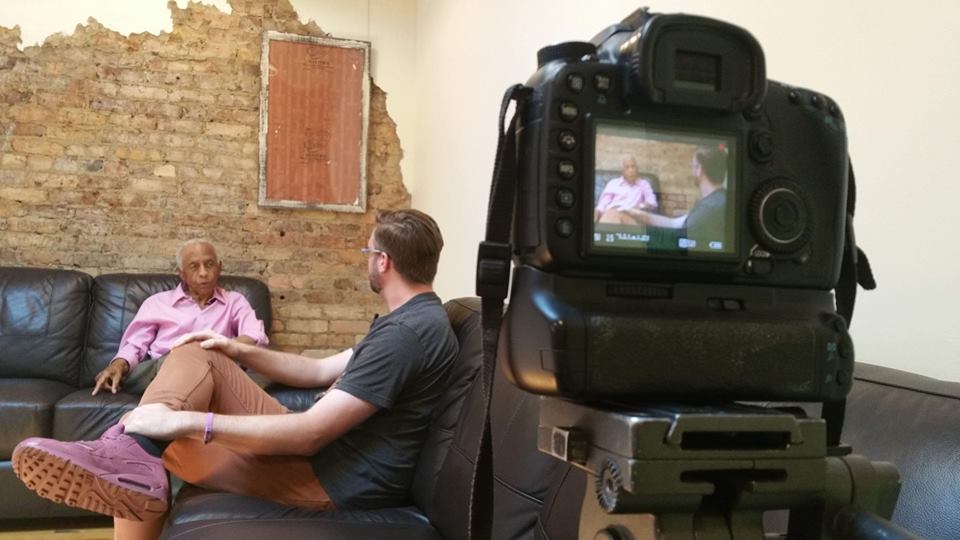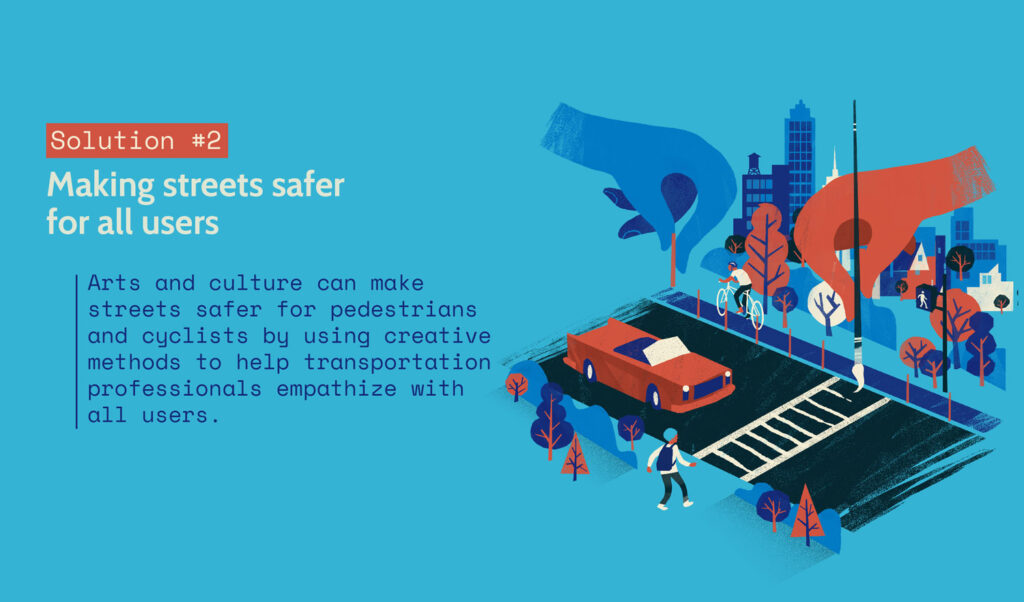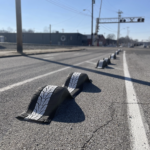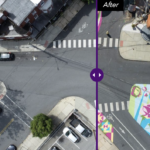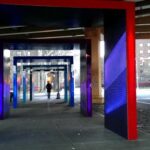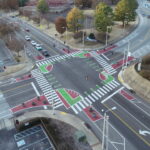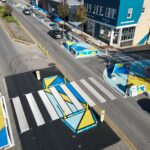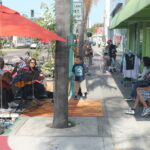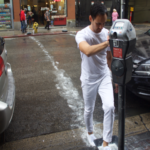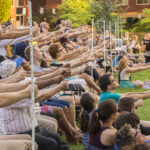Attempting to deviate from the top-down style of planning that is typical in Dothan, AL, the city partnered with the Wiregrass Museum of Art and artist Cosby Hayes to produce “the most forward visioning initiative in the history of the city and greater Southeast Alabama Region,” in the city’s words.
The challenge
Dothan is a small southern city in lower Alabama (pop. ~68,000) with a retail and medical services hub-market serving over 600,000. Dothan has fallen victim to the adverse impacts of years of sprawl and planning for vehicles at the expense of everyone and everything else. The vast majority of the area’s recent transportation funds have been utilized solely for roadway construction and expansion, often out at the fringe of this small city. Dothan is not served by transit service, the city’s sidewalks—where they exist—are generally in poor condition, and there are no designated bicycle lanes. Furthermore, according to U.S. Census Data, about 20 percent of Dothan residents live below the federal poverty line. Compounded by both struggling communities and auto dependency, those who walk or ride bicycles as a regular means of transportation face challenging and dangerous circumstances.
The project
In close collaboration with the Wiregrass Museum of Art, Dothan’s first museum, the City of Dothan integrated arts and culture into the redesign of a four-mile segment of the Highway 84 corridor to address mobility, connectivity, and aesthetics to tell a story of their history, people, achievements, and future. Bob Wilkerson, a planner with the City of Dothan, framed up the potential of using a new approach for this project:
The city will have an opportunity to shape a new and exciting development format which places livability at the forefront of how we utilize the built environment. It’s a format that makes possible the use of transportation corridors for alternative means of transportation, promotes active lifestyles, engages visual poetry in the design of infrastructure, streetscapes, and landscapes, and enables mixed-use developments that in-turn generate vibrant communities within the urban context.
The results
The Highway 84 East project incorporated an artist through a summer-long artist-in-residence program, directed by the Wiregrass Museum of Art in partnership with the City of Dothan. The artist, Cosby Hayes, was selected by a committee of community and organizational leaders, including small business owners, non-profit directors, local residents, and volunteers. Hayes was tasked with engaging residents to collect stories and feedback about their experiences with transportation along the corridor. In a period of approximately nine weeks, Hayes talked to residents in the area, documenting their stories by video.
Hayes’ participation in the project provided a mechanism for residents from all walks of life to be heard by the City of Dothan. Hayes used a proactive outreach approach to obtain feedback and document stories, and worked to engage residents in the area by walking through neighborhoods, visiting a homeless camp adjacent to the Highway 84 East corridor, asking local historians for their perspective, and attending collaborative outreach events. Hayes was seen as a neutral actor, rather than a government official, and was able to build trust with local residents by actively engaging with questions about how improved modes of transportation would improve their daily lives. With video of residents’ feedback, Hayes and videographer Mike Morris were able to submit documentation of anecdotes and statements of support for thoughtful, inclusive transportation planning to the Corridor project’s leaders.
Upon completion of the master planning process, the city’s report summed up the project:
This Corridor Project is a bold first step in challenging the auto centric status of the City. This project re-defines what a roadway is and how it will function in the future. This project challenges the Alabama Department of Transportation’s view that Highway 84 East is for one thing only and that is to ‘move cars as quickly from one end of the corridor to the other’, and the obvious inference that pedestrians and cyclists may engage the roadway at their own risk. This notion has not been called-out nor challenged until the opportunity arrived for the development of the proposed Hwy 84 Corridor Plan. This represents a key and undeniable accomplishment of the project while signaling challenges ahead for implementation.

